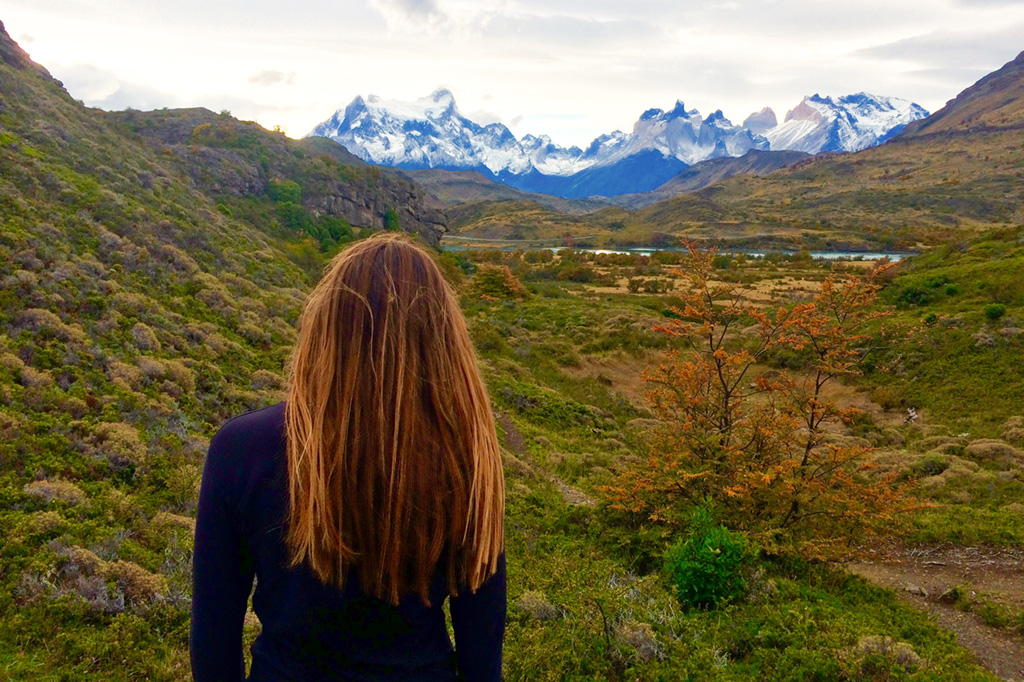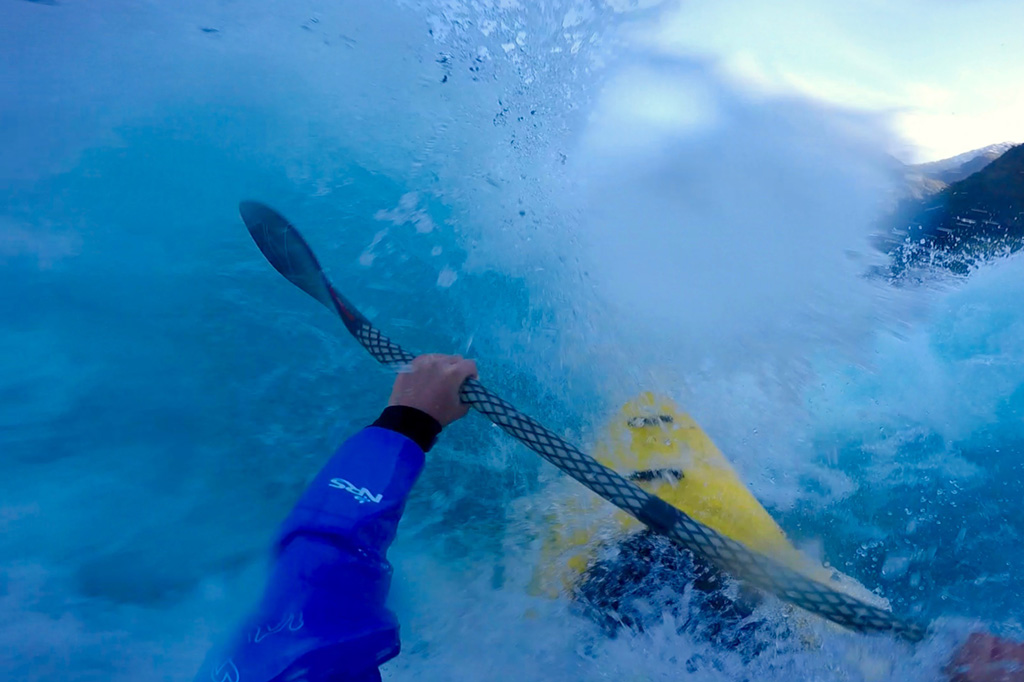Editor’s note: From a simply educational point of view, high school senior projects provide an opportunity for students to apply skills and knowledge they have acquired over four years to achieve a specific goal. Perhaps more important, though, is the fact that they often inspire students to pursue their true passions, some they may not have known they had before embarking on a senior project.
In a series of articles, we present excerpts from some outstanding projects of the 2017 graduating class.
High School: Community School
Project Title: Chiloé Goes to Church
Post-graduation Plans: Gap year: working as a game ranger, Kruger National Park (South Africa), conservation internships, kayaking.
I am Chiloé. My parents named me after an island off the coast of Chile, which means baby seagull in the Mapuche Indian language.
Those who are not kayakers might not understand the title of my project: “Chiloé Goes to Church.” I was not raised under any type of religion, but I was taught at a young age to appreciate nature’s blood. So, I guess you could say I consider nature my religion.
For most of my life I was raised in the depths of Patagonia, which is a region that covers the bottom half of Chile and Argentina. I lived in my own little bubble: horseback riding, playing with lambs, and kayaking instead of going to school like the rest of my classmates.
I moved to Sun Valley when I was 14, and it was a total culture shock.
For my senior project I was given the opportunity to go back to my roots and explore the places I hadn’t seen, nor imagine existed. My goal was to explore the most isolated and remote places in Patagonia by kayak. It was a personal journey to find the beauty, mystery, adrenaline and magic of adventure behind whitewater kayaking and the spirit of nature’s blood while trying to understand how the rest of the world sees these rivers and remote places.
The rivers of Chile are not protected and have been threatened by dam projects since 1981 when the dictator Augusto Pinochet sold Chilean water rights to foreign private companies. The present water law now motivates rights holders to develop projects, as they have to pay yearly for the rights if they are not developed. Basically, these rivers will remain threatened unless Chile adopts an act similar to the Wild and Scenic Rivers Act in the U.S.
Río Puelo
My project began at the headwaters of the Río Puelo, a river that has been threatened by dam projects on multiple occasions. Our mission was to descend the drainage from its source in Argentina to the Pacific Ocean: four lakes, four sections of river, in four days.
Most people look at rivers in terms of recreation, but on this journey my perspective changed. I had one of the most spiritual moments of my life.
We started in sea kayaks, traversing a long upper lake, then negotiated a river section with three whitewater rapids. We then crossed into Chile and paddled the length of a lower lake, which fed a lower river. By the time we got to the second river stretch, it was dark. We had to rely on the sounds of the rapids to navigate to a home of a Mapuche family that was waiting for us on the side of the river with flashlights and open arms. There was a Class V gorge just below their cabin, so missing the cabin was not an option.
After spending the night on their farm, we continued our journey to the ocean. The next 16 hours were to be spent in a canyon of no return. Once you’re in, you’re in. My dad, Chris Spelius, ran this canyon 35 years ago and remembered only four major rapids and one or two portages. It turned out there were 16 rapids ranging from Class IV to Class V. This was by far the most challenging and stressful nine hours of kayaking I had ever experienced.
Any kayaker’s worst nightmare is to miss an eddy and accidently run a class V portage, which is a section of river that is too dangerous to run. This is exactly what happened to me. I knew the consequences of not hitting the last eddy before a portage, but I underestimated the strength of the river and flipped on the eddy line.
As I rolled my kayak up, I realized that the current had sent me to the middle of the river. I felt a combination of feelings that I would not wish on my worst enemy. I was lonely, scared and helpless—and floating toward a massive boulder called the “tombstone” rock in the throat of a class V rapid, the scariest whitewater I had ever seen.
I knew at that point that there was nothing else I could do but to go for it and go with the flow. Somehow—I have no idea how—I made it through without even getting my hair wet. I had a perfect line. I didn’t even take a paddle stroke. I just felt my boat buck like a bull gone wild. And, when realized I was still alive, my first reaction was to cry—tears of joy. It were as if someone had pushed my boat with a little golden finger down the perfect line, and it was not my dad, nor my cousin Harley, and it was definitely not me.
I honestly thought it was God, or the river gods, or something, but not me.
After reflecting on everything that happened that day, I was afraid to continue the expedition. I realized how one simple mistake in underestimating the river could change everything. We still had to run the second gorge, called El Porton (The Gate). I could not help but wonder: the gate to what?
I was terrified on the first rapid; there was no clean line, and all the water from the river pushed up on a wall. But I got through, and I finally started to loosen up again. I began to scout and run the rapids with more confidence.
The last stretch of the expedition consisted of traversing two more lakes and another river section that led to the ocean. It was starting to get dark, so my dad and I switched into a two-man sea kayak to bust out the miles faster. There was no way we were stopping before we smelled the ocean. To our surprise the whitewater was not over, and we found ourselves again reading whitewater in the dark, this time as a team. We arrived at the Pacific reflecting on our and the water’s journey across the Andes and Chile. We were exhausted. At this point I was tired of being scared. However, gliding over the most radiant, translucent turquoise water with the words of our native friends in my mind was life changing. This expedition taught me to look at these beautiful rivers through this light.
The End of the World

Chiloé Spelius in Tierra del Fuego
Our final adventure was located at the end of the world in Tierra del Fuego, south of the Strait of Magellan, where we were to embark on a six-day expedition in the fjords of Mount Darwin. With danger all around us, this place redefined my definitions of remote, of beauty, of ruggedness and frigid temperatures.
After my adventures in Patagonia, I began to reflect on my time spent in the most isolated places of the world. I came to realize that what impacted me the most were the people and the stories they had to share. Even though I had my ways of looking at the pristine beauty of nature’s blood, I was touched and humbled by the rivers, nature and by the insight of how others view it.
The river is crazy scary, fierce and unforgiving. She makes you feel completely insignificant but, at the same time, she sets you free. When you learn how to dance with it, she becomes your church and your place.


